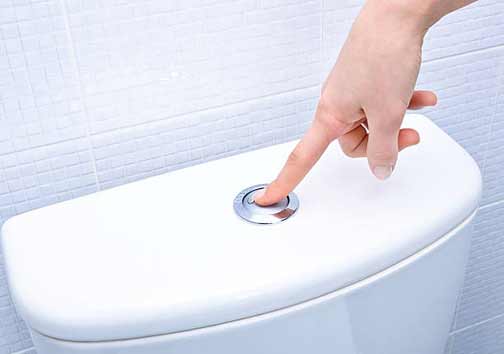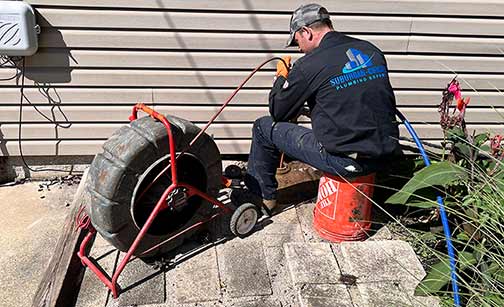
A slow-flushing toilet may be an early warning sign of sewer line problems in your home, says 3 Keys Management, Inc. This is because your toilet and sewer line are intimately interconnected. Like all other plumbing fixtures in your home, your toilet also empties into the sewer line.
This means that if blockages in the sewer line are preventing wastewater from passing through the pipes, water entering your sewer line from the toilet will be stopped. The result is that your toilet drain will fill up with water, making it hard to flush the toilet.
Usually, if a toilet is having trouble flushing, your first thought might be to unclog it with a plunger or drain snake. These solutions only work if the root cause of the problem is in the toilet drain itself. However, if it is from the sewer line, using a plunger or drain snake will not help.
What are the signs that a slow-flushing toilet may be the result of clogs in your sewer line?
Signs that a slow-flushing toilet is caused by a sewer line blockage
Slow flushing in multiple toilets
If this problem is present in more than one toilet in your home and your floor drains or shower drains are also showing signs of being clogged, the issue may be caused by a blocked sewer line.
Gurgling sounds
If you hear gurgling sounds every time you flush the toilet, it is a sign that there are trapped gases inside your sewer line. If sewer gases are trapped within the sewer line, it means either the sewer line or the vent system is blocked.
Fluctuating water level inside the toilet
If the water level inside the bowl rises and falls erratically, you may have a blocked sewer line. Perhaps the sewer line is partially blocked, leading to a temporary buildup of wastewater inside the toilet bowl.
Sewer odors in your home
If raw sewage smells inside or outside your home, your sewer line may be blocked and leaking sewer gases. Trapped sewer gases inside the line may be finding their way out through your toilet and other outlets.
Water inside the toilet bowl moves
If the water inside your toilet bowl moves when you use other plumbing fixtures in your home, such as nearby sinks, your sewer line may be blocked. The movements in the toilet are due to air pressure imbalances.

How to diagnose and fix the sewer line issues
It is not possible to precisely diagnose problems in a sewer line without professional tools. Even if, based on the above signs, you determine that your sewer line is blocked, you still have the issue of detecting the blockage’s location and the type of material inside the pipes.
To diagnose problems in the sewer line, you need a sewer camera inspection. What is a sewer camera inspection?
Sewer Camera Inspection
This is one of the most efficient and cost-effective tools used by professional plumbers to understand the root cause of sewer line problems. To inspect the line, a specialized waterproof high-resolution camera is inserted into the sewer line through an access point, such as a cleanout.
This camera is attached to a flexible cable, which the operator uses to guide it into the depths and crannies of the sewer pipe. As it travels into the line, the camera captures a detailed image of the pipe channel and transmits the video in real time to a screen monitored by the plumber.
Sewer camera inspections provide plumbers a way to view the inside of your sewer line, allowing them to evaluate the physical condition of the pipes, locate problems, and determine the cause and extent of those problems. It is the most efficient diagnostic tool for sewer line problems.
Professional drain cleaning
But a sewer camera inspection will only detect the presence of blockages and other problems in your sewer line. It will not remove them. For that, you need a different set of tools, namely, hydro jetting and sewer rodding.
Hydro jetting uses high-pressure water to break up and also eject the debris blocking a sewer line. To hydro jet a blocked pipe, a high-pressure hose with a stainless-steel nozzle is inserted into the sewer line, before water is pumped into the line to clear it.
Another method for clearing debris from a blocked sewer line is called sewer rodding. It uses a series of stackable flexible rods to reach deep into the sewer line to dislodge the debris inside. Sewer rodding can be done manually or with a motorized version.
These two methods are effective for clearing sludge, grease, scale, and even tree roots.
To conclude, problems like slow-flushing toilets in your home due to sewer line problems are completely avoidable. You can prevent them by inspecting and cleaning your drainpipes and sewer line on a schedule, instead of waiting until problems occur.
Doing these steps regularly is the key to avoiding unpleasant plumbing emergencies in your home.

